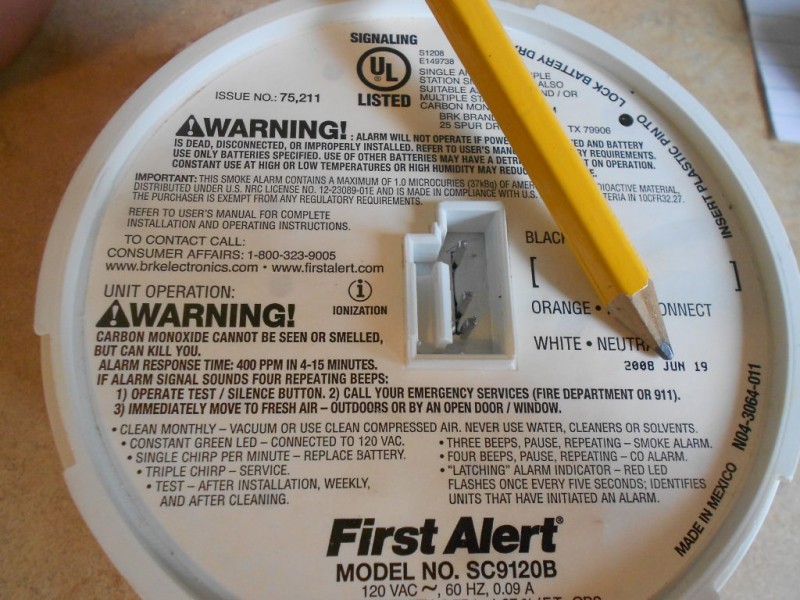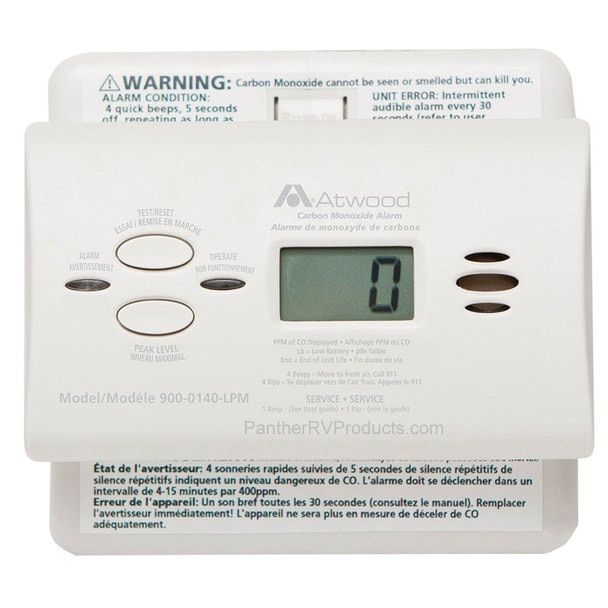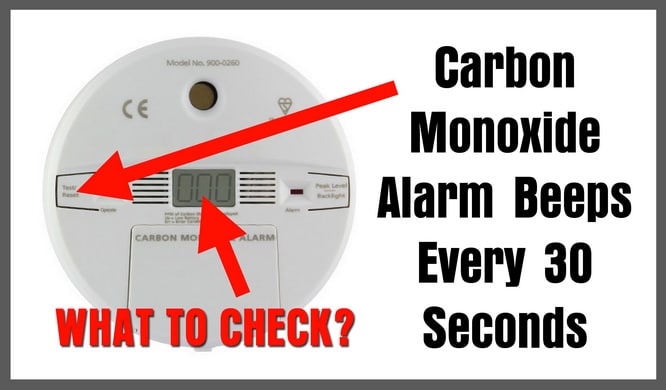Can you see carbon monoxide. Carbon Monoxide Detection: How Detectors Work and Why They’re Crucial for Safety
How do carbon monoxide detectors measure gas levels. What are the different types of CO detectors available. Why is carbon monoxide called the invisible killer. How can you protect yourself from carbon monoxide poisoning.
The Silent Threat: Understanding Carbon Monoxide
Carbon monoxide (CO) is often referred to as the “invisible killer” due to its odorless, colorless, and tasteless nature. This toxic gas is a byproduct of incomplete combustion and can emanate from faulty heating systems, improperly used appliances, or vehicles operating in enclosed spaces. The dangers associated with carbon monoxide are significant, as exposure can lead to severe health complications or even death within minutes if present in high concentrations.
Why is carbon monoxide so dangerous? The primary reason lies in its ability to bind with hemoglobin in our blood more readily than oxygen. This process forms carboxyhemoglobin, which prevents the body from effectively transporting oxygen to vital organs and tissues. As a result, even low levels of exposure over time can cause serious health issues.

Sources of Carbon Monoxide in Households
- Malfunctioning furnaces or boilers
- Improperly vented gas appliances
- Blocked chimneys or flues
- Running vehicles in attached garages
- Portable generators used indoors or near openings
- Wood-burning stoves or fireplaces with poor ventilation
The Lifesaving Role of Carbon Monoxide Detectors
Given the imperceptible nature of carbon monoxide, detectors play a crucial role in safeguarding our lives. These devices are designed to measure CO concentrations in the air and alert occupants when levels become dangerous. But how do they accomplish this vital task?
Carbon monoxide detectors operate by continuously monitoring the air for the presence of CO molecules. When the concentration reaches a predetermined threshold over a specific period, the detector triggers an alarm. This early warning system provides occupants with precious time to evacuate the area and seek fresh air before experiencing symptoms of CO poisoning.
Alarm Thresholds and Response Times
How quickly do carbon monoxide detectors respond to dangerous levels? The response time varies based on the concentration of CO in the air:

- At 70 parts per million (ppm), the alarm will sound within 1-4 hours
- At 150 ppm, the alarm will activate within 10-50 minutes
- At 400 ppm or higher, the alarm will trigger within 4-15 minutes
These thresholds are designed to provide adequate warning before CO levels become life-threatening, allowing occupants to take necessary precautions and evacuate the premises if needed.
Types of Carbon Monoxide Detectors and Their Operating Principles
Carbon monoxide detectors come in several varieties, each employing a unique method to detect the presence of this deadly gas. Understanding the different types can help you make an informed decision when choosing a detector for your home or workplace.
Electrochemical Sensors
How do electrochemical CO detectors work? These devices utilize a chemical solution called an electrolyte and a set of electrodes. When carbon monoxide enters the sensor chamber, it triggers a chemical reaction that generates an electric current. The magnitude of this current corresponds to the concentration of CO present, allowing the detector to accurately measure and report the gas levels.
Electrochemical sensors are known for their high accuracy and quick response times, making them one of the most popular choices for residential and commercial applications.
Metal Oxide Semiconductors
Metal oxide semiconductor detectors operate on a similar principle to electrochemical sensors but use a different mechanism. Instead of a liquid electrolyte, these detectors employ a circuit with a metal oxide semiconductor chip. When carbon monoxide comes into contact with the chip, it reduces the electrical resistance of the material. The degree of this reduction is proportional to the concentration of CO in the air, enabling the detector to measure and report the gas levels accurately.
While metal oxide semiconductor detectors are generally less expensive than electrochemical models, they may be more prone to false alarms and have a shorter lifespan.
Biomimetic Sensors
How do biomimetic CO detectors mimic human physiology? These innovative devices use a gel that changes color when exposed to carbon monoxide, similar to how hemoglobin in our blood changes color when it binds with CO. A light sensor monitors the gel’s color, providing an indication of the CO levels in the surrounding air.
Biomimetic sensors offer a unique approach to CO detection and can be particularly useful in situations where visual confirmation of gas presence is desired.
Proper Placement and Maintenance of Carbon Monoxide Detectors
To ensure optimal protection against carbon monoxide, it’s essential to install and maintain detectors correctly. Where should you place CO detectors in your home?
- Install detectors on every level of your home, including the basement
- Place a detector outside each sleeping area
- Position detectors at least 15 feet away from fuel-burning appliances
- Avoid installing detectors near windows, doors, or vents where drafts may interfere with readings
- Mount detectors on the ceiling or high on walls, as CO mixes with air
How often should you test and replace your CO detectors? Regular maintenance is crucial for ensuring the continued effectiveness of your carbon monoxide detectors:
- Test your detectors monthly by pressing the test button
- Replace batteries annually or when the low-battery warning sounds
- Replace the entire detector unit every 5-7 years, or according to the manufacturer’s recommendations
- Clean detectors regularly by gently vacuuming the exterior to remove dust and debris
- Keep a record of installation dates and set reminders for regular maintenance
Advanced Features in Modern Carbon Monoxide Detectors
As technology advances, carbon monoxide detectors are becoming increasingly sophisticated, offering additional features to enhance safety and convenience. What are some of the latest innovations in CO detection?
Smart CO Detectors
Smart carbon monoxide detectors can connect to your home’s Wi-Fi network, allowing you to monitor CO levels remotely through a smartphone app. These devices can send real-time alerts to your phone if dangerous levels are detected, even when you’re away from home. Some smart detectors also integrate with home automation systems, enabling actions such as automatically shutting off gas appliances or activating ventilation systems when CO is detected.
Combination Detectors
Many modern detectors combine CO detection with other safety features, such as smoke detection or natural gas sensing. These multi-functional devices can provide comprehensive protection against various household hazards while reducing the number of separate units needed.
Digital Displays
Some CO detectors feature digital displays that show real-time CO levels in parts per million. This feature allows homeowners to monitor background levels of carbon monoxide and identify potential issues before they become dangerous.
Voice Alerts
Instead of or in addition to traditional beeping alarms, some detectors use voice alerts to warn occupants of dangerous CO levels. These verbal warnings can be particularly effective in waking sleeping individuals and providing clear instructions during an emergency.
Preventing Carbon Monoxide Buildup: Proactive Measures
While carbon monoxide detectors are essential for safety, taking steps to prevent CO buildup in the first place is equally important. How can you reduce the risk of carbon monoxide exposure in your home?
- Schedule annual inspections for all fuel-burning appliances, including furnaces, water heaters, and fireplaces
- Ensure proper ventilation for all combustion appliances
- Never use portable generators, grills, or camp stoves indoors or in enclosed spaces
- Avoid running vehicles in attached garages, even with the door open
- Clear snow and debris from vents, flues, and chimneys regularly
- Install carbon monoxide detectors in addition to taking preventive measures
By combining proactive prevention with reliable detection systems, you can significantly reduce the risk of carbon monoxide poisoning and create a safer living environment for you and your loved ones.
Carbon Monoxide Safety in Different Settings
Carbon monoxide risks are not limited to residential settings. How do CO safety measures differ in various environments?
Workplace Safety
In industrial settings where carbon monoxide may be present, employers must adhere to strict safety regulations. This often includes installing fixed gas detection systems, providing personal CO monitors for workers, and implementing comprehensive emergency response plans. Regular training on CO safety and proper use of detection equipment is also crucial in these environments.
Recreational Vehicles and Boats
Carbon monoxide poses unique risks in recreational vehicles and boats due to the confined spaces and potential for exhaust to accumulate. Installing marine-grade CO detectors in these vehicles is essential. Additionally, proper maintenance of engines and exhaust systems, along with educating occupants about the dangers of CO, can help prevent tragic accidents.
Public Spaces
Many public buildings, such as schools, hospitals, and hotels, are required by law to have carbon monoxide detection systems installed. These systems often feature centralized monitoring and can automatically alert building management or emergency services if dangerous levels are detected.
Understanding the specific CO risks and safety measures in different settings is crucial for comprehensive protection against this invisible threat.
The Future of Carbon Monoxide Detection Technology
As research and development in gas detection technology continue to advance, what can we expect from future carbon monoxide detectors?
Miniaturization and Integration
Advancements in sensor technology are leading to smaller, more efficient CO detectors. This miniaturization could allow for the integration of CO sensors into everyday devices such as smartphones or smart home hubs, providing ubiquitous protection.
Improved Accuracy and Sensitivity
Next-generation sensors may offer even greater accuracy and sensitivity, potentially detecting CO at lower concentrations or with faster response times. This could provide earlier warnings and better protection against long-term, low-level exposure.
Artificial Intelligence and Predictive Analytics
Future CO detection systems may incorporate AI algorithms to analyze patterns in CO levels over time. This could enable predictive maintenance for appliances, identifying potential issues before they lead to dangerous CO leaks.
Enhanced Connectivity and Integration
As the Internet of Things (IoT) expands, CO detectors are likely to become more interconnected with other smart home systems. This could enable more sophisticated responses to CO detection, such as automatically shutting off gas supplies, activating ventilation systems, or alerting emergency services.
The ongoing evolution of carbon monoxide detection technology promises to provide even greater protection against this silent threat, making our homes and workplaces safer than ever before.
Как работают детекторы угарного газа?
Кредит:
Н. Ханачек/NIST
Вы не можете это увидеть, понюхать или попробовать на вкус. А в изобилии он может убить за считанные минуты. Угарный газ, иногда называемый невидимым убийцей, является газообразным побочным продуктом неполного сгорания, который может просачиваться из сломанных или неправильно используемых систем отопления на опасных уровнях. Неисправные печи или печи, транспортные средства или портативные генераторы, работающие в помещении, — все это потенциальные виновники отравления угарным газом, которое ежегодно убивает сотни людей и приводит к госпитализации десятков тысяч человек
К счастью, у нас есть детекторы угарного газа, которые предупреждают нас, прежде чем мы окажемся в опасности.
Эти детекторы предназначены для измерения концентрации угарного газа в воздухе (в частях на миллион или частей на миллион) и подачи сигнала тревоги, если достаточное количество химического вещества присутствует достаточно долго, чтобы стать проблемой. При обнаружении в течение нескольких часов угарного газа в концентрации 70 частей на миллион вызовет тревогу. На другом конце спектра опасные концентрации выше 400 частей на миллион сделают то же самое уже через несколько минут.
При обнаружении в течение нескольких часов угарного газа в концентрации 70 частей на миллион вызовет тревогу. На другом конце спектра опасные концентрации выше 400 частей на миллион сделают то же самое уже через несколько минут.
В любом случае сигнализация должна обеспечивать достаточное оповещение, чтобы находящиеся поблизости люди могли сбежать до того, как проявятся такие симптомы, как тошнота, головная боль или потеря сознания. Существуют стандарты безопасности, гарантирующие, что детекторы надежно подадут сигнал тревоги в нужное время.
Портативные генераторы могут производить более чем в сто раз больше окиси углерода, чем выхлопные газы автомобилей, и, согласно CDC, их нельзя эксплуатировать в помещении или на расстоянии менее 6,1 метра (20 футов) от открытого окна, двери или вентиляционного отверстия, куда могут попасть выхлопные газы генератора. закрытая территория.
Кредит:
НИСТ
Доступно несколько типов детекторов, в каждом из которых используется свой метод измерения уровня угарного газа.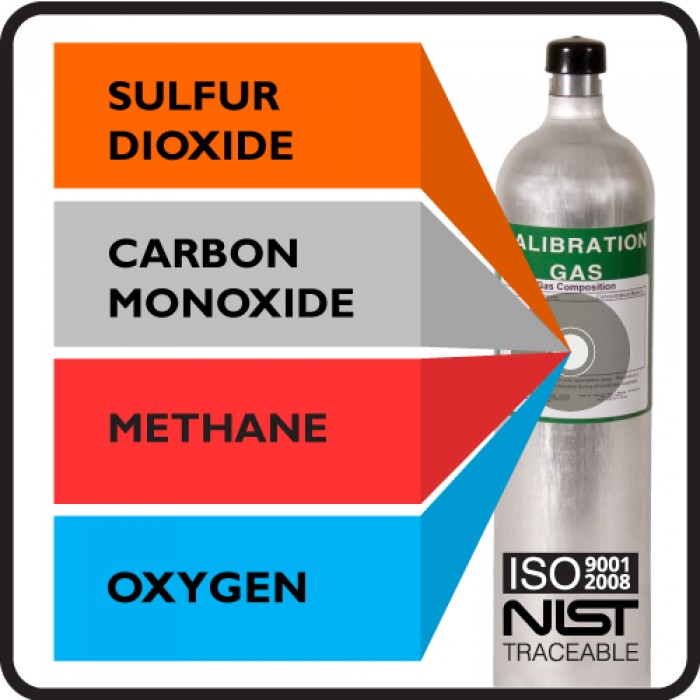 Но как именно эти устройства могут обнаружить невидимого убийцу?
Но как именно эти устройства могут обнаружить невидимого убийцу?
Самый распространенный тип детектора выполняет работу с помощью электрохимических датчиков, состоящих из электродов, погруженных в электропроводящий раствор, называемый электролитом. Когда угарный газ попадает в газопроницаемый отсек, в котором находится датчик, происходит химическая реакция, вызывающая скачок электрического тока, проходящего через электролит. Конкретная величина, на которую увеличивается ток, сообщает детектору концентрацию молекул монооксида углерода.
Датчики оксида металла работают по тому же принципу, но вместо химического раствора эти датчики полагаются на схему. Когда угарный газ встречается с чипом датчика, он снижает сопротивление материала потоку электричества до степени, которая зависит от концентрации химического вещества, присутствующего в воздухе.
Другой подход основан на гемоглобине, белке, содержащемся в клетках крови, который доставляет кислород к вашим тканям (но может быть легко захвачен угарным газом). Когда кислород или углекислый газ химически присоединяется к гемоглобину в легких, цвет белка заметно становится ярче, в результате чего ваша кровь меняет цвет с темного на вишнево-красный. Некоторые детекторы угарного газа имитируют этот эффект с помощью геля, который меняет цвет, впитывая смертельное химическое вещество. Датчик освещенности отслеживает цвет геля, что указывает на уровень угарного газа поблизости.
Когда кислород или углекислый газ химически присоединяется к гемоглобину в легких, цвет белка заметно становится ярче, в результате чего ваша кровь меняет цвет с темного на вишнево-красный. Некоторые детекторы угарного газа имитируют этот эффект с помощью геля, который меняет цвет, впитывая смертельное химическое вещество. Датчик освещенности отслеживает цвет геля, что указывает на уровень угарного газа поблизости.
Несмотря на то, что существует несколько видов технологий на выбор, любой функционирующий детектор может значительно снизить риск отравления угарным газом. Национальная ассоциация противопожарной защиты (NFPA) рекомендует устанавливать детекторы в соответствии с инструкциями производителя в центральном месте за пределами каждой комнаты, где спят люди, и на каждом этаже дома. Местные законы, кодексы или стандарты также могут содержать дополнительные требования, на которые следует обратить внимание.
Все датчики имеют ограниченный срок службы, который зависит от производителя.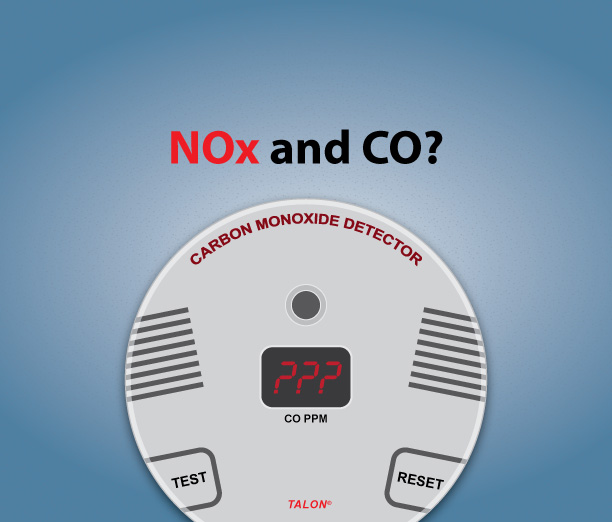 Детекторы угарного газа, отвечающие новейшим стандартам США, сигнализируют об окончании срока службы и необходимости замены.
Детекторы угарного газа, отвечающие новейшим стандартам США, сигнализируют об окончании срока службы и необходимости замены.
Борьба с проблемой у ее источника также может иметь большое значение для предотвращения угарного газа. Двигатели транспортных средств не должны работать в закрытом гараже или в любом другом помещении. А портативные генераторы, которые могут выделять более чем в сто раз больше угарного газа, чем автомобильные выхлопы, должны работать на открытом воздухе и как можно дальше от окон и дверей, даже во время чрезвычайных погодных условий.
Вы можете найти дополнительные рекомендации от NFPA и Центров по контролю и профилактике заболеваний, оба из которых рекомендуют детекторы угарного газа — решающую последнюю линию защиты от невидимого убийцы.
Химия, электроника, окружающая среда, здравоохранение, общественная безопасность и стандарты
Как определить угарный газ – Healthy Home Center
Угарный газ и ваше здоровье
Когда угарный газ загрязняет воздух, вы вдыхаете больше угарного газа чем кислород. Попадая в организм, окись углерода попадает в кровь, где заменяет кислород; это происходит в первую очередь в жизненно важных органах, таких как мозг и сердце, которые затем становятся лишенными кислорода.
Попадая в организм, окись углерода попадает в кровь, где заменяет кислород; это происходит в первую очередь в жизненно важных органах, таких как мозг и сердце, которые затем становятся лишенными кислорода.
Первые симптомы отравления угарного газа включают в себя:
- Грузость или одышка. воздействие монооксида и от того, как долго длится воздействие. Отравление угарным газом может вызвать некоторые из немедленных краткосрочных эффектов, отмеченных выше, но оно может быстро стать серьезным, с тошнотой, рвотой и потерей мышечной координации. Вдыхание большого количества угарного газа может быстро привести к потере сознания и удушью.
Предотвращение отравления угарным газом
Детектор угарного газа необходим в каждом доме и так же важен, как детектор дыма. Детекторы угарного газа должны быть размещены возле всех спален; это единственный способ узнать, влияет ли угарный газ на качество воздуха в вашем доме, и может помочь предотвратить серьезные заболевания и даже смерть.

Следуйте всем указаниям производителя, в том числе тому, как часто необходимо заменять устройство, и всегда следите за тем, чтобы на покупаемой модели был сертификационный ярлык UL (Underwriters Laboratories). К сожалению, не все детекторы угарного газа эффективны на 100 % — некоторые бренды показали хорошие результаты в ходе независимого тестирования, а другие — нет. Изучите модели перед покупкой, чтобы выбрать ту, которая получила самые высокие оценки в тестах.
Если вы испытываете какие-либо симптомы отравления угарным газом, даже если сигнал тревоги детектора не сработал, немедленно выведите всех из дома на свежий воздух.
По данным Агентства по охране окружающей среды США, использование детектора угарного газа является лишь частью эффективной профилактики. Также убедитесь, что все приборы, работающие на топливе, проходят регулярное техническое обслуживание и работают должным образом. Чтобы снизить риск угарного газа в вашем доме, следуйте этим советам:
- Всегда открывайте дымоход при использовании камина.

- Никогда не оставляйте включенную машину в гараже; например, если вы прогреваете его перед поездкой зимой, делайте это на улице.
- Будьте осторожны при использовании дровяных печей: убедитесь, что они сертифицированы Агентством по охране окружающей среды США, а дверцы плотно закрыты.
- Используйте соответствующее топливо в керосиновых обогревателях.
- Следите за тем, чтобы все газовые приборы в вашем доме работали исправно, и часто их проверяйте.
- Каждый год профессионал должен проверять и очищать вашу печь и всю систему отопления.
- Никогда не используйте машины с бензиновым двигателем или угольные грили в помещении.
- Быстро устраняйте любые утечки в вашей системе центрального отопления.
Важно соблюдать эти меры предосторожности, чтобы убедиться, что угарный газ не попадает в ваш дом. Мониторы угарного газа, используемые в сочетании с профилактическими советами по безопасности, могут помочь вам защитить вас и вашу семью от отравления угарным газом.

Что такое фэн-шуй? Руководство по созданию хорошей энергии в вашем доме
Джессика Мигала
7 комнатных растений, которые могут быть полезны для вашего здоровья
Некоторые исследования показывают, что вы можете улучшить воздух — и настроение — в своем доме, ухаживая за этими растениями.
Дженнифер Ларсон
Как подготовиться к 8 типам стихийных бедствий
Если вашему дому угрожает внешняя угроза, воспользуйтесь этими советами экспертов, чтобы сохранить здоровье вашей семьи и избежать опасности.
Анжела Хаупт
5 лучших осушителей воздуха для вашего дома
Правильный осушитель удалит из воздуха лишнюю влагу и предотвратит образование плесени.

- Всегда открывайте дымоход при использовании камина.

